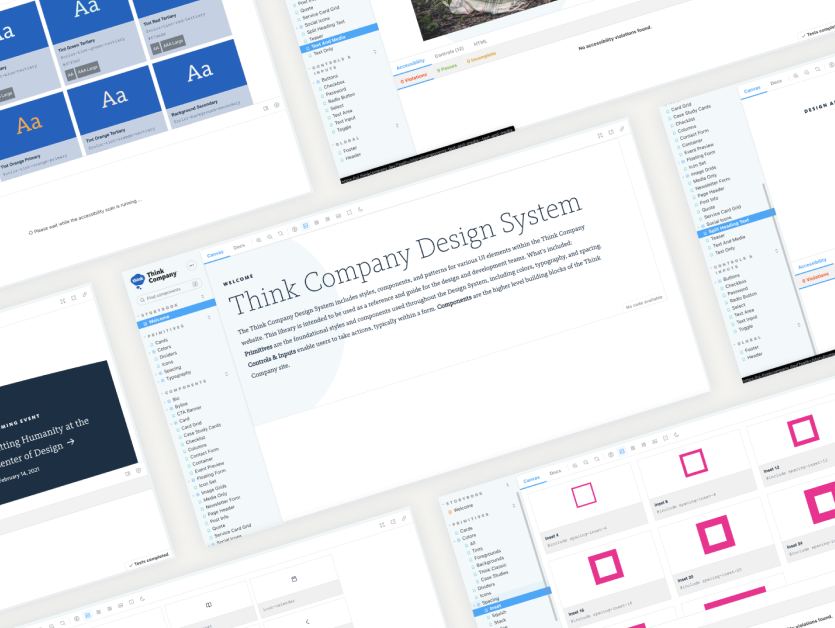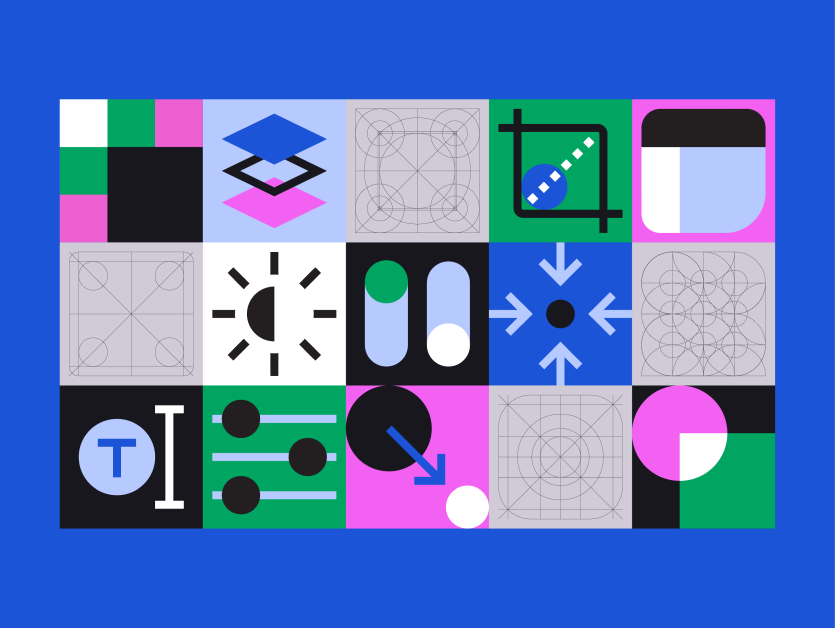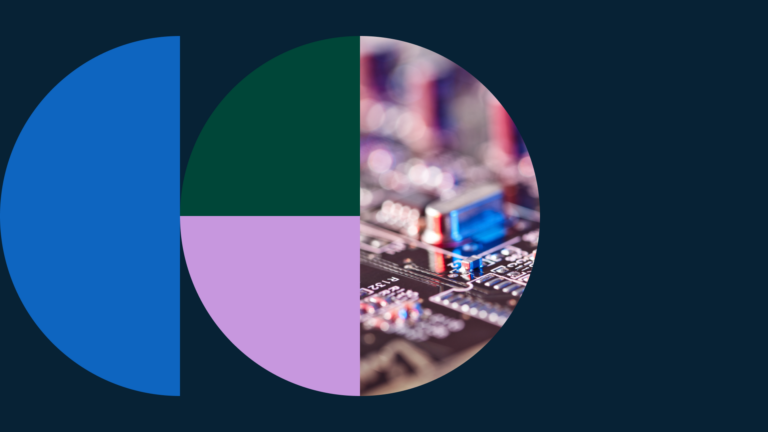The public didn’t really take any notice of Generative AI until the release of ChatGPT in November 2022, but in less than two years, this technology has rapidly become a key player in companies’ content strategies.
When it comes to design, the fully automated development of large-scale enterprise business tools is not likely to come to pass in the foreseeable future—if at all. But it won’t be long before generative AI can create simple websites and subdomains. With generative AI taking care of simple, largely templated designs, organizations will be able to get products to the market faster and spend more time tackling complex challenges.
But to take full advantage of AI-assisted design, it’s critical to have a comprehensive, well-maintained design system in place so that AI has all the resources and guidelines it needs to ensure the finished product reflects current styles and branding to create a consistent experience.
The importance of a design system for AI-powered designs
A design system is a style guide and pattern library that ensures consistency across multiple products, simplifies changing styles across an entire brand and product suite as it evolves, and speeds the development of new features and products. Typically, a design system consists of a user interface (UI) library, a storefront to access design system information, and guidance and tooling for managing the ongoing evolution of the design system.
Just like humans, AI will need guidelines to ensure consistency in the look and feel of outputs and to comply with accessibility and compliance requirements. A design system provides these guidelines. Additionally, a good design system makes ongoing maintenance of AI-generated pages easier and more efficient.
Of course, it begs the question: If AI-powered design is not yet a reality, why start preparing now? Take content creation—no one expected generative AI to become so embedded in content processes so quickly. It’s best to start preparing now. And, besides, there’s no downside to having a robust and well-maintained design system.
The benefits of building, maintaining, and evolving a design system—even without an AI-assisted design practice
A solid design system can bring many benefits to your organization and products. Here’s how:
- Consistent look and feel across applications: Since all designers and developers work from the same style guide and use the same patterns, they’ll be able to more efficiently create cohesive designs across your product suite. No more disjointed brand experiences.
- Simpler collaboration: We all know it can be challenging to work effectively across departments and teams. With a design system and UI toolkit in place, it’s much easier to be on the same page and collaborate on a project.
Is your design system ready for the future?
Our experts can help!
- Documentation and consensus: Since you’re working out of one system, all styles and patterns are located in a single repository, which is a great start to proper documentation.
- Continuous management and improvement: As new projects come to fruition and your brand and products change over time, your team can make those changes in the design system, which then propagates throughout all products—making product improvements and brand refreshes much more attainable.
- Speeds the development of new features: With styles and reusable components in the design system, designers don’t need to reinvent the wheel. Your team can create features your customers need more quickly without starting from scratch.
There are also significant downsides to developing without a design system. For starters, you’ll likely have an inconsistent web presence, especially if your organization has recently been through a merger or acquisition. Ensuring the look and feel are consistent across acquired digital properties is already tricky—working without a design system makes that job exponentially harder
Additionally, your team will spend a ton of extra time making manual updates and coordinating quality assurance. And, of course, when AI-powered design does become a reality shortly, without a solid design system, you won’t be able to use the technology to its fullest. To stay at the front of the pack, you should start preparing now.
Best practices for ensuring your design systems are ready for AI-powered design
Are you convinced it’s worth investing time into building or evolving your design system? Our design system experts can help. Here are some practical steps to get started.
Conduct an audit of your design system and UI toolkit
The first step in ensuring your design system is ready for AI is to conduct a complete audit of your existing system to understand what it includes and what is missing. Identify the most frequently used patterns (buttons, color schemes, etc.) and avoid including one-offs. Remember, the goal is to include patterns that will be frequently reused across your brand.
Define the fundamentals
To ensure your design system is built on a solid foundation, you must define the fundamentals—think colors and font styles. Once those are in place, build on them to create more complex patterns, such as button variations and navigation.
Implement and use design tokens
Design tokens are a key feature of a strong design system. These tokens are defined variables, and using them consistently ensures that the organization can rapidly update the design as styles change without undertaking tedious manual work.
For instance, using the token “red” enables the design system to change the shade of red used, whether tomato, maroon, or scarlet. If a redesign changes the shade, all that’s required is to change the color defined in the token. This saves weeks, even months, to manually change hundreds or thousands of individual values throughout the site.
Document all the need-to-knows
Remember, as teams change and designers roll on and off products, centralized documentation for your design system will be important. That’s where a storefront comes into play. This storefront should house all the processes, tooling, and essential details and decisions made.
Create a maintenance plan
As we mentioned, whether you have a design system or you’re building one, you should never set it and forget it. Create a plan to maintain and evolve your design system over time. It should include things like a long-term strategy, team members and their roles, required tooling updates, and more.
Common mistakes in design system implementation
It’s important to remember that, with generative AI, the outputs are only as good as the data on which the AI is trained, a lesson many content professionals have had to learn the hard way. Making sure your design system is properly built, well organized, and regularly maintained will help ensure you’re ready for AI-assisted design—and increase the benefits you’ll see from working with it in the meantime. With this in mind, here are a few common mistakes to avoid as you work to improve or build your design system:
- Versioning issues: Make sure that individual components have versioning. If this isn’t in place, designers will have to spend precious time sorting through all the possibilities before they find the most current one. Version control is critical.
- Taking a “set it and forget it attitude”: We really want to emphasize this. As we mentioned above, a design system is a living resource that requires regular maintenance and updating to keep it fresh, current, and, frankly, usable.
- Trying to do it all on your own: Building, strengthening, and maintaining a design system is a significant undertaking, and pulling people from different departments to build it can understandably create communication issues and result in a disjointed design system. Employing a third party with deep design systems expertise is often a good idea for such a complex project. Don’t be afraid to leverage the help of experts who can help your teams get sorted out and aligned quickly.
Get ahead by preparing your design system for AI-powered design
As we move into this new era of AI-assisted design—for more simple websites and subdomains—organizations will need a robust design system in place to provide the necessary structure and guidelines to effectively utilize these tools. It’s the only way AI will be able to create microsites and simple digital products with consistency, efficiency, and quality.
Ready to strengthen your organization’s design system? Think Company has helped numerous organizations enhance their design systems. We’d be happy to talk about yours—get in touch!





